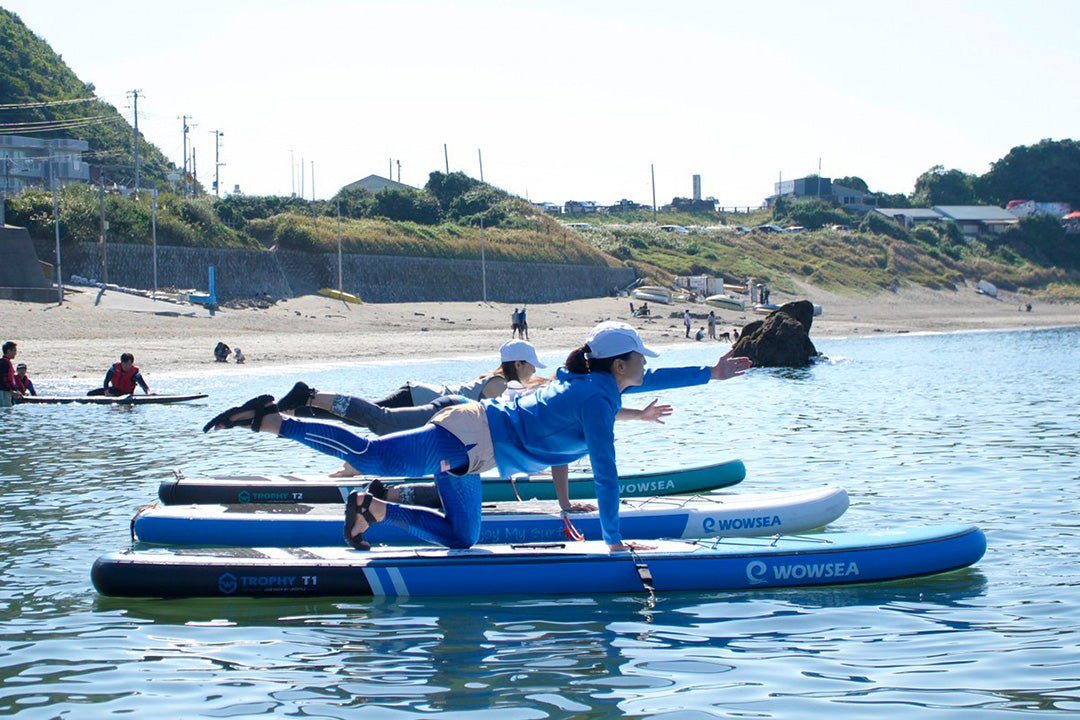
How can I improve my paddleboarding balance?
There are many things to know if you are starting with paddle boarding. When it comes to stand-up paddle boarding, balancing on the board is the most difficult part. For beginners, here are a few tips on quickly learning How To Balance on a SUP.
How can I improve my sup balance?
Starting by practicing in different conditions will help you improve your SUP balance. Keeping upright in rough waves or paddling out in choppy waters can be challenging. In addition to paddling out into open water, you can do tricks as you become more proficient! You can improve your SUP Balance by simply practicing and being patient. It’s possible to overcome any SUP obstacle with patience and dedication.
You can improve your SUP balance by practicing yoga!
You can improve your SUP balance by practicing yoga. A board will improve your ability to stand on a board and help you gain strength and flexibility, which are keys to a healthy lifestyle and general fitness. Try attending a few yoga classes to help you improve your SUP balance if you have been thinking about adding another exercise to your routine.

Tips for balancing your paddleboard as a beginner
1. Choosing a paddle board that is the right size for you.
You will need to have the right paddle length and the right board size to learn how we can manage your balance on a paddle board, especially an inflatable one. Choosing a paddle board that is the right size for you is important based on your weight, height, and weight.
Among the parameters, the width is crucial. Paddleboards that are wider are easier to balance on. A paddle board that is suitable for beginners and deeply loved by paddleboarding enthusiasts is the WOWSEA Trophy T1 Inflatable Paddle Board.
2. Way to get on a paddleboard first time
Getting on your paddle board is easiest when standing on shallow water, so if you are starting, find a place that allows you to stand. Launching your SUP board from a dock would be a great idea. In that case, other techniques would have to be used.
The following tips will help you get on the board safely in shallow water. First, get down on your knees to sit on the board. Placing yourself right in the center of the paddle is necessary since that's usually where the weight is.
The tail of the paddleboard will sink into the water if you are too far back, and the nose will sink into the water if you are too far forward. You should always ensure you are right in the middle of the board if you want to get on the board safely and steadily without falling into the water.

You can try standing up after you are comfortable kneeling on the board and can maintain perfect balance. It might be necessary to use a wider board if you still have difficulty balancing when kneeling.
It would be easier to balance on a larger and wider paddleboard because it provides more stability. The difficulty you have getting up from a kneeling position could make getting up from a standing position even more challenging.
Once you've gotten on the board, kneel and try taking a few strokes to see what happens. Hold the paddle shorter and take a few strokes instead of holding it from the top to get the board moving.
3. Getting ready to stand up
Getting ready to stand up after kneeling on the board will make your paddle-boarding experience more authentic. It is best to go into the wind first if you can. When you're ready to stand up, place the paddle in front of you, step into your feet where your knees once were, and then stand up. While trying to stand up, keep your eyes on the water and start paddling right away.
Getting up from a kneeling position to a standing position may be difficult if you have stiff knees. For such people, here is another way of standing up.
You can use the SUP paddle as a support to help you stand up from the kneeling position by putting the paddle in front of you. There might not be an easier way to stand up, but it is the best option for certain people. Always stay in the middle of the board to ensure that your paddleboard is flat on the water.

4. Make sure that your knees are bent and your upper body is forward.
Once you have stood up, maintain a slight bend in your knees and look forward. Keep your eyes focused on the board, and avoid being hunched over or bent forward.
5. Keep your paddle board in the water at all times.
Once you start paddling, keep your paddle board in the water at all times. Get low and place your paddle board in the water if you lose your balance. When you put the paddle to the side, it will provide you with more stability.
6. Make sure you are stand in the middle of your paddleboard.
As mentioned previously, a smaller SUP board has the disadvantage of being less stable. The most important thing when using a small board is to stand in the middle. You will notice that the tail sinks, and the board becomes less stable if you put weight further back.
It is always best and most stable to position yourself in the center. Avoid turning the board quickly unless you want to do so quickly. Making small jumps can help you move forward or backward. By unweighting one foot, you can move the board in an extremely unstable manner. Using small jumps will help you accomplish that.
7. Practice on-land balancing exercises
It is possible to train on land and use various tools directly transferable to water sports.
It is highly recommended that you begin on-land balance training as soon as possible. The internet is full of free videos where you can find balance exercises to inspire you today, such as those on YouTube, Instagram, etc.
A BOSU ball is one of the best balance training tools because it allows you to work on your balance & stability from a three-dimensional perspective (which is a great way to transfer that to a SUP board). On the other hand, on a balance board, you can only focus on the side-to-side or the front-to-back stability, which is less effective and carries a much lesser transfer to SUP.
What if I can't balance on my paddleboard?
Try using a long paddle if you are having trouble balancing on your paddleboard. When working on improving your balance will help you feel more stable.
Keeping your eyes focused on something in the distance will also help you to stay focused. You can practice in different situations and positions to maximize your SUP experience.

Bottom Line
To improve your SUP balance, you must practice and be patient. Your ability to conquer any obstacle on the water will be determined by your time, dedication, and efforts.
You can also improve your stability through yoga! In the beginning, you will struggle to balance on the paddle board, but with practice, you will be able to stand steadily without any problems.
And don't forget to get yourself an inflatable paddle board. You can spend much time on the water with a nice stand-up paddleboard, and with a nice slogan of Love Enjoy My Lifestyle!
Recent Articles

Tips for Keeping and Using Inflatable Paddle Boards in Winter
Let's talk about how to use and maintain inflatable stand-up paddleboards (SUPs) in winter. We’ll cover equipment checks, how to dress properly, choosing the right safety gear, and paddling techniques. With the right preparation and exploration, you can create unforgettable water adventure memories this winter!
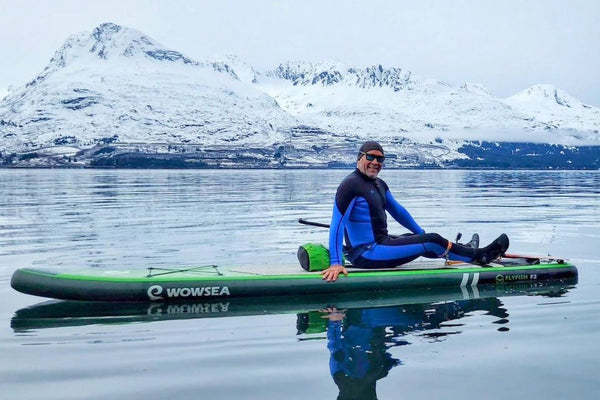
Cold Weather, Warm Spirits: Inflatable Paddle Boards' Winter Wonderland
By navigating icy waters on your inflatable board with a focus on safety, you can discover the profound silence and stark beauty of the winter waterways, all while keeping fitness levels high and spirits invigorated.
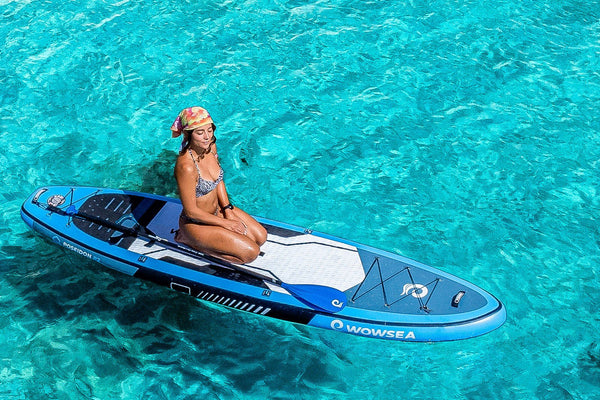
How to Incorporate Meditation into Your SUP boarding Routine
SUP boarding is not merely a recreational pursuit but a holistic journey—where the water becomes a canvas for meditation, and each stroke becomes a brushstroke in the masterpiece of mindful living.
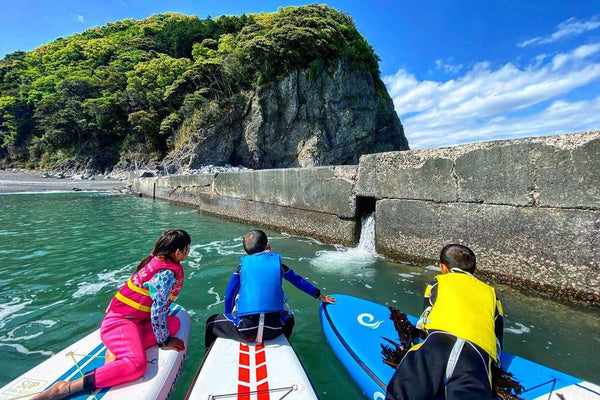
A Comprehensive Guide to Family Stand-Up Paddleboarding Adventures
From choosing the perfect board and accessories, overcoming challenges, and building confidence in young paddlers to capturing memories through photography and exploring family-friendly paddleboarding destinations, the WOWSEA SUP experience is rich with opportunities for bonding, learning, and creating cherished memories.
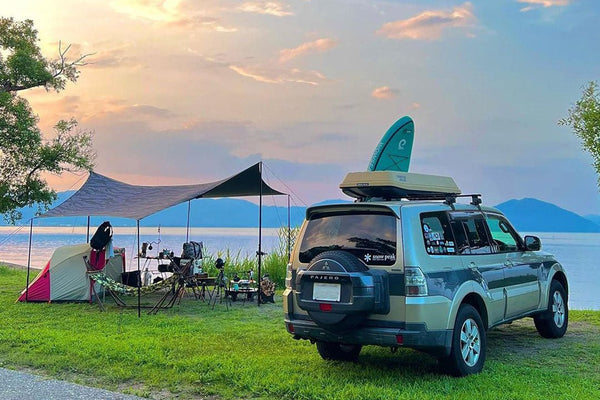
How to have an overnight Multi-Day SUP Trips and Camping (2)
The Complete Guide to Paddleboard Travel and Camping: Pack your gear, set up camp, and get ready to create lifelong memories on the water with WOWSEA SUP boards.
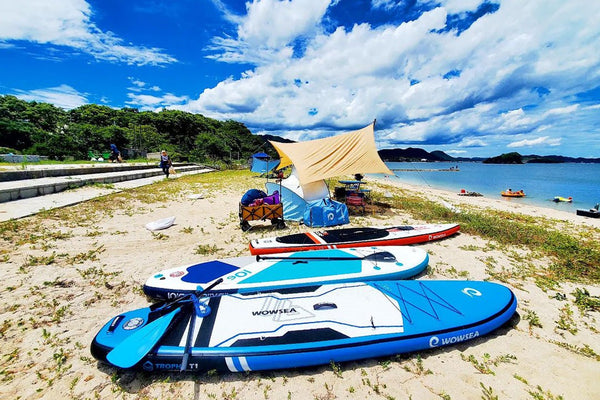
How to have an overnight Multi-Day SUP Trips and Camping (1)
The allure of multi-day trips and camping with SUP boards lies in the freedom to explore remote and untouched locations. This opens up a world of possibilities for adventurers who crave solitude, tranquility, and an intimate connection with nature.
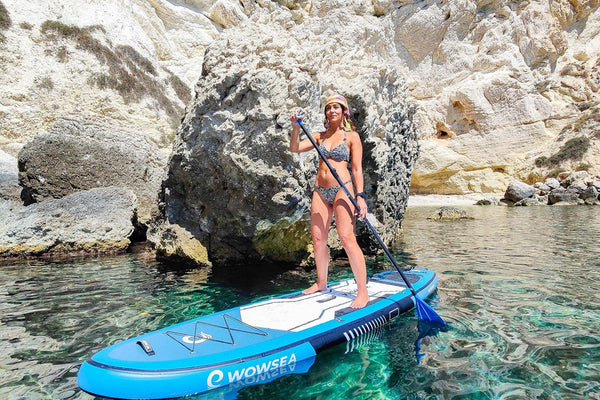
Exploring the Beauty of Nature with WOWSEA Inflatable Paddle Board: A Guide for Tourists
With the WOWSEA Inflatable Paddle Board, tourists can embark on unforgettable adventures and experience the beauty of nature in a whole new way.
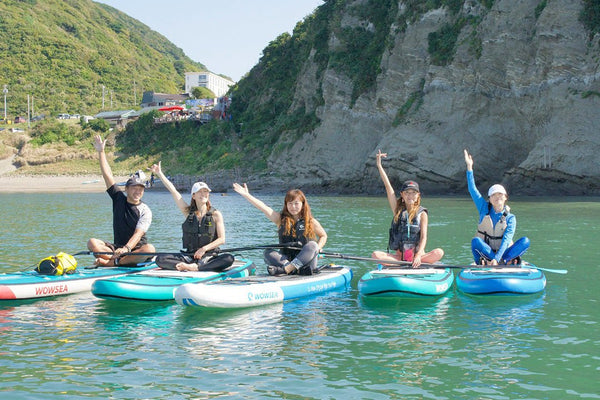
How to Paddleboard with a Group - Games and Activities
Group paddleboarding games and activities are a fantastic way to bond with others, have fun, and make the most of your time on the water. They provide opportunities for friendly competition, teamwork, and exploration, enhancing the overall experience of your paddleboarding adventure.

Share